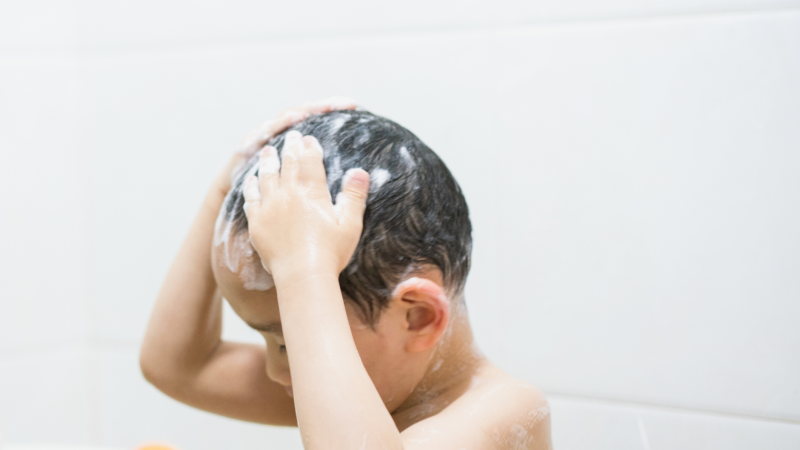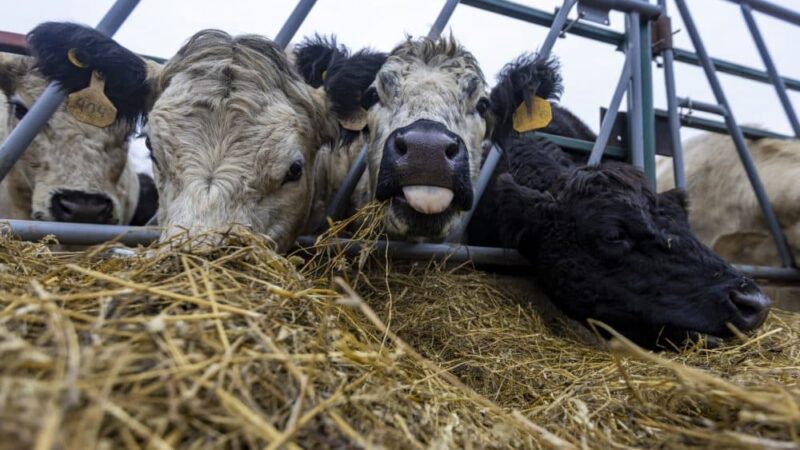Hair and skin care products expose kids to hormone disrupting chemicals, study finds
A new study links the recent use of personal care products like lotions, ointments and hair conditioners to higher levels of endocrine-disrupting chemicals called phthalates in young children. And children of different racial and ethnic groups seemed to have different levels of exposure to these chemicals.
Phthalates are a group of chemicals added to plastics to make them more flexible and durable. They are also used as ingredients in some personal care products.
These chemicals are endocrine disruptors – which means they can mimic, block or interfere with the body’s own hormones. And when it comes to children, the concern is that they might cause disruptions during key developmental moments.
Prior studies have linked regular exposure to phthalates during pregnancy and early childhood to negative impacts on children – including impaired brain development and behavioral problems, as well as other health concerns.
Researchers have also raised concerns that the widespread presence of endocrine-disrupting chemicals like phthalates in the environment may be contributing to girls getting their first menstrual period at an earlier age.
Phthalates don’t stay in the body for very long, but health researchers worry about the cumulative effects of those exposures.
The scientific evidence on the harms of phthalates is not yet conclusive, but it accumulating and compelling, says Michael Bloom, a professor at George Mason University whose research focuses on endocrine-disrupting chemicals. “And this is why we have great concern, especially among these very young children whose brains are still very actively developing,” Bloom says.
In the new study, published in the journal Environmental Health Perspectives, Bloom and his colleagues examined clinical data from 630 children ages 4 to 8 from whom they’d collected urine samples. Their parents or guardians filled out surveys about any hair and skin care products they’d applied to the child within the past 24 hours.
“We found that the recent use of several different types of skin care products was associated with higher urinary concentrations of several different types of phthalates,” Bloom says. That, in itself, isn’t new: He notes that prior studies have found similar results in infants and pregnant women, though not in young kids in this 4-8 age range.
But the new study provides clear evidence of the links between kids’ exposures and a range of personal care products, says Dr. Lynn Goldman, a pediatrician and epidemiologist who formerly served as an assistant administrator for toxic substances at the Environmental Protection Agency. She was not involved in the new study.
Goldman notes that until now, concerns about phthalate exposure have often focused on diet, since the chemicals can leach into food from plastic packaging, as well as food handling equipment such as tubing and conveyor belts.
“I think we should be much more concerned than we have been in the past about the fact that these [chemicals] might be allowed in cosmetics and personal care products,” says Goldman, who is now the dean of the Milken Institute School of Public Health at George Washington University.
Bloom and his colleagues also found differences in phthalate exposures by race and ethnicity. For example, they found strong associations between the use of hair oils and elevated phthalate levels among children who identified as Hispanic, Asian and Pacific Islander. Meanwhile, the use of body lotion was associated with the kinds of phthalates used as ingredients in personal care products among white children but not among Black and Hispanic children. Bloom speculates that some of those differences may stem from differences in the kinds of products marketed to different groups, “but we haven’t been able to disentangle that.”
Overall, Black children had the highest levels of phthalates in their urine. Other studies have found that many beauty products targeted at communities of color have high levels of these chemicals.
“I think this is a very important study, because we need to understand exposures in vulnerable populations such as children,” and understanding differences in exposures by racial and ethnic backgrounds can help researchers figure out ways to reduce risks, says Dr. Shruthi Mahalingaiah, an assistant professor of environmental, reproductive and women’s health at Harvard T.H. Chan School of Public Health who was not involved in the current study.
And as social media helps fuel a craze for skin care among tweens and teens, Mahalingaiah says the findings are an important reminder that some of these products could potentially be exposing kids to endocrine-disrupting chemicals.
“I have three teenage children who are very interested in products and self-care products. And it’s something that I’m very concerned about,” she says.
She had her teens download a free app called YUKA. Shoppers can simply scan the barcode of a product while in the store, and the app will flag potential health concerns linked to ingredients. She notes you can also look up products in the Environmental Working Group’s Skin Deep database.
Ultimately though, Goldman says, “I don’t think that it’s really up to parents to be policing the ingredients in these products. I think it’s a job for the FDA. It’s a job for the EPA.”
She says more research is needed, but the findings reinforce the need for regulators to take a closer look at this family of chemicals and ask tougher questions about how all this cumulative exposure may be affecting children and other vulnerable populations.
This story was edited by Jane Greenhalgh
In interview on X, Trump addresses apparent assassination attempt for the first time
Former President Donald Trump spoke for the first time about the apparent assassination attempt on him Sunday at his golf course and talking to President Biden on Monday.
Former officer says Tyre Nichols ‘wasn’t a threat’ when taken from car during stop
Emmitt Martin III, a former Memphis police officer who has pleaded guilty in the case, took the stand in the federal trial of former colleagues Tadarrius Bean, Demetrius Haley and Justin Smith.
A baker attends a festival to make the biggest whoopie pie in the world
The whoopie pie is a favorite New England dessert. Since bigger is always better, a Vermont baker sets out to make the biggest whoopie pie in the world.
Mass. cows don’t have bird flu, state says
State testing from all 95 Massachusetts dairy farms showed a 100% negative result for the dangerous strain of influenza, according to the state Department of Agricultural Resources.
GPB evening headlines for September 16, 2024
Apalachee High School now has a return-to-class plan following the shooting that killed four people at the school on September 4th. A new report from shows that barriers to nutritious food and physical activity are driving up rates of obesity in Georgia communities. Notable figures in politics, film and music are set to take the stage on Tuesday for a concert celebrating Jimmy Carter's centennial.
Gymnast Jordan Chiles appeals to Swiss supreme court for her Olympic bronze medal
Chiles was awarded the bronze medal at the Paris floor exercise final. But her medal was revoked by an arbitration court, which ruled an inquiry that had improved her score was filed seconds too late.







